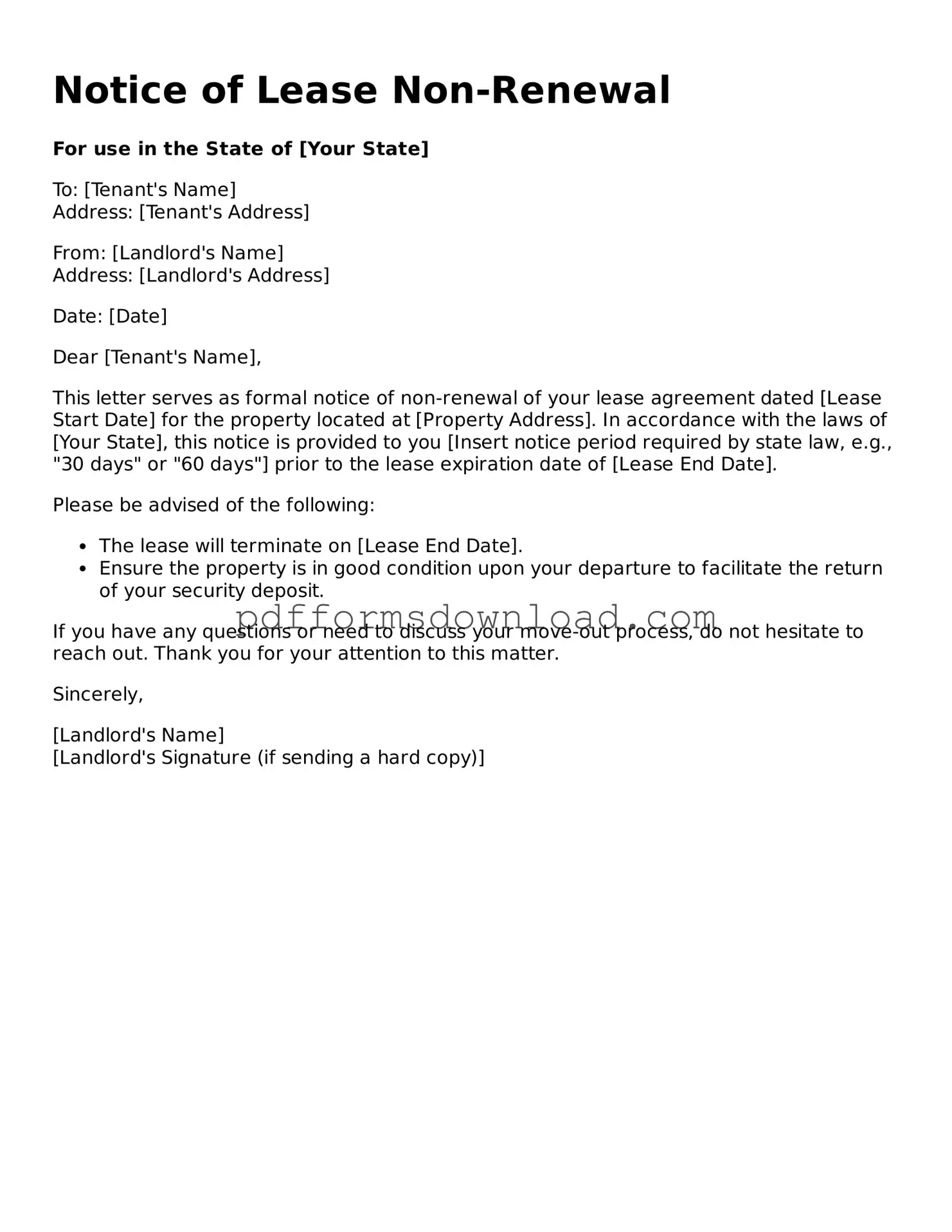What is a Notice of Lease Non-Renewal form?
A Notice of Lease Non-Renewal form is a document used by landlords or property owners to inform tenants that their lease will not be renewed once it expires. This notice serves as an official communication, allowing both parties to prepare for the end of the tenancy. It is essential for ensuring that tenants have adequate time to make arrangements for moving or finding new housing.
When should I send a Notice of Lease Non-Renewal?
The timing for sending a Notice of Lease Non-Renewal typically depends on the terms outlined in the lease agreement and state laws. Generally, it is advisable to provide this notice at least 30 to 60 days before the lease expiration date. Checking local regulations is crucial, as some areas may have specific requirements regarding the notice period.
Do I need a specific reason to issue a Notice of Lease Non-Renewal?
No, a landlord does not need to provide a reason for not renewing a lease. However, it is important to ensure that the decision is not based on discriminatory factors or retaliatory motives. Transparency can foster goodwill, but it is not legally required to state a reason in the notice.
What should be included in the Notice of Lease Non-Renewal?
A comprehensive Notice of Lease Non-Renewal should include the following elements: the date of the notice, the tenant's name and address, the property address, the lease expiration date, and a clear statement indicating that the lease will not be renewed. Additionally, including instructions regarding the move-out process can be beneficial for both parties.
Can a tenant contest a Notice of Lease Non-Renewal?
While a tenant can express concerns or contest a Notice of Lease Non-Renewal, the landlord is not legally obligated to change their decision. Tenants may wish to discuss the situation with the landlord to seek clarification or negotiate terms, but ultimately, if the landlord has followed the proper procedures, they have the right to decide not to renew the lease.
What happens if I do not receive a Notice of Lease Non-Renewal?
If a tenant does not receive a Notice of Lease Non-Renewal and the lease is approaching its expiration date, it is advisable to communicate with the landlord. In some cases, if no notice is provided, the lease may automatically renew, depending on the lease terms. Therefore, proactive communication is key to avoiding misunderstandings.
Is there a specific format for the Notice of Lease Non-Renewal?
While there is no universally mandated format for a Notice of Lease Non-Renewal, it should be clear, concise, and professional. Using a standard letter format that includes the necessary details, as mentioned earlier, is generally acceptable. Many landlords choose to use templates to ensure that all essential information is included.
What are the consequences of failing to provide a Notice of Lease Non-Renewal?
Failing to provide a Notice of Lease Non-Renewal when required by law or the lease agreement can lead to complications. In some jurisdictions, it may result in the lease automatically renewing, which obligates the landlord to continue the tenancy under the same terms. This situation can create challenges for landlords who intended to regain possession of the property.
